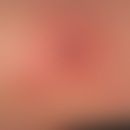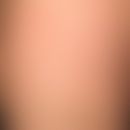Synonym(s)
DefinitionThis section has been translated automatically.
Pediculosis due to infection with clothes lice (Pediculosis humanus corporis). The louse is a vector of spotted fever, febris quintana, European relapsing fever, tularemia (see Table 1).
PathogenThis section has been translated automatically.
Pediculus humanus corporis (also Pediculus vestimentorum), the approx. 4 mm long clothes louse
You might also be interested in
Occurrence/EpidemiologyThis section has been translated automatically.
EtiopathogenesisThis section has been translated automatically.
LocalizationThis section has been translated automatically.
ClinicThis section has been translated automatically.
DiagnosisThis section has been translated automatically.
Differential diagnosisThis section has been translated automatically.
Dermatitis herpetiformis; eczema; age pruritus; nummular eczema; pyoderma; tinea corporis; diabetic pruritus.
Complication(s)(associated diseasesThis section has been translated automatically.
Transmission of pathogens by clothes lice (not by head lice):
- Rickettsia prowazekii: see below typhus, epidemic.
- Rickettsia typhi (mooseri): see below typhus , endemic.
- Bartonella quintana: see below Febris quintana.
- Borrelia recurrentis: see below Recurrent fever
- Bartonella quintana: see below Angiomatosis bacillary
TherapyThis section has been translated automatically.
General therapyThis section has been translated automatically.
Clothing infested with lice (including bed linen, scarves, etc.) should either be disposed of or washed as hot as possible. Lice can also be destroyed by starvation by keeping the clothes in a sealed plastic bag for 4 weeks. It is easier to "freeze out" the lice by storing the clothes in a freezer for 2 days. Special anti-parasitic therapy of the skin is not necessary, as lice do not stay there after the stinging and sucking act, but remain in the clothes. Instead, a nurturing, possibly anti-eczematous treatment with weakly effective glucocorticoids such as 1% hydrocortisone (e.g. hydrogalene, R123 ).
TablesThis section has been translated automatically.
Transmitter |
Pathogen |
Disease |
Pediculus humanus humanus (more rarely also Pediculus humanus capitis) |
Rickettsia prowazeki |
classical typhus |
rickettsia mooseri |
murine typhus |
|
rickettsia recurrentis |
relapsing European fever |
|
rickettsia quintana |
Well-hynical fever |
|
tular Francisella |
Tularaemia |
|
Salmonella |
Salmonellosis |
|
Staphylococci |
Pyoderma |
LiteratureThis section has been translated automatically.
- Powers J et al (2019) Pediculosis Corporis. In: StatPearls Publishing May 21.
Incoming links (12)
Bacillary angiomatosis; Clothes malfunction; Epidemic typhus; Febris quintana; Hydrocortisone emulsion hydrophilic 0.5-1; Lice; Lice eczema; Pediculosis (overview); Pediculus capitis; Pyrethrins; ... Show allOutgoing links (21)
Bacillary angiomatosis; Dermatitis herpetiformis; Eczema (overview); Epidemic typhus; Febris quintana; Glucocorticosteroids; Hydrocortisone emulsion hydrophilic 0.5-1; Lice; Off-label use; Pediculosis capitis; ... Show allDisclaimer
Please ask your physician for a reliable diagnosis. This website is only meant as a reference.








